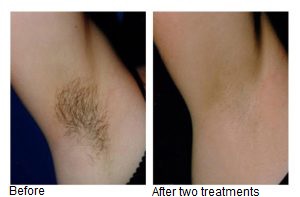Working Time
- – Monday-Friday 09:00 – 16:00
(After 16:00 Only with appointment)
– Saturday, Sunday With appointment
Contact Info
-
-
Tel: 1-514-243-4019
-
Ask the Experts
Laser Hair Removal

How long does laser hair removal last?
Laser hair removal is a long-lasting form of hair removal that damages or destroys the hair follicle.
However, the hair may regrow, particularly if the follicle is damaged and not destroyed during the laser hair removal procedure.
For this reason, many doctors now refer to laser hair removal as long-term hair removal rather than permanent hair removal.
Read on to learn about how laser hair removal works, how long it lasts, and the costs of laser hair removal procedures.
How does laser hair removal work?
Laser hair removal uses light to target the pigment in individual hairs. The light travels down the shaft of the hair and into the hair follicle.
The heat from the laser light destroys the hair follicle, and a hair can no longer grow from it.
Hair follows a unique growth cycle that involves resting, shedding, and growing periods. Recently removed hair that is in a resting phase will not be visible to the technician or laser, so a person may need to wait until it regrows before removing it.
For most people, laser hair removal requires several treatments over the course of 2 to 3 months.
Is laser hair removal permanent?
people who undergo hair removal can expect that some hair in the targeted area will grow back
Over time, it is possible to treat the area again to reduce the number of hairs that regrow. In some cases, it may even be possible to eliminate all hair.
Whether or not hair grows back depends on numerous factors, including the type of hair that regrows and the skill of the person removing the hair.
Most people find that when hair regrows, it is lighter and less noticeable than it was before. This is because the laser may damage the hair follicle even when it fails to destroy it.
If a hair follicle is damaged but not destroyed, the hair will eventually regrow. It can be difficult to destroy every single hair follicle, so most people will see some hair regrowth.
When hair regrows, it is possible to treat it again, so people who want to remove all the hair may need several treatments.
In some cases, hair may be too light, too short, or resistant to treatment. In these cases, a person might choose to use other hair removal methods, such as plucking stray hairs.
How long does laser hair removal last?
Laser hair removal is permanent when the hair follicle is destroyed. When the hair follicle is only damaged, the hair will eventually regrow.
The amount of time it takes for the hair to regrow depends on the person’s unique hair growth cycle. Some people have hair that grows more quickly than others. Hair that is in a resting phase will grow back more slowly than hair that is in another phase.
Most people can expect some hair regrowth within a few months. Once this happens, they can opt for more removal treatments.
Does skin or hair color make a difference?
Hair removal works best on people with light complexions who have dark hair. This is because the pigment contrast makes it easier for the laser to target the hair, travel into the follicle, and destroy the follicle.
People with dark skin or light hair may need more treatments than others and may find that more hair grows back.
To permanently remove hair, the technician must know how to target the hair and choose the right type of laser. Research published in 2013 found that lasers that produce longer wavelengths work best on dark skin.
Side effects and risks
During treatment, some people experience burning, stinging, or discomfort. For this reason, many technicians apply a numbing cream to the area they are treating. However, some people may have an allergic reaction or skin irritation in response to the numbing cream.
Minor side effects are common, and may include:
- changes in the color of the skin, particularly in people with dark skin, which are usually temporary
- skin redness
- blistering or crusting of the skin
- Sometimes, irritation related to hair removal can cause scarring.
Damaged skin can also become infected. Though rare, skin infections can spread and become life-threatening.
Providing a detailed medical history and discussing risks and benefits can help the provider determine the right treatment, reducing the risk of serious side effects.
Following hair removal, a person should avoid sun exposure. The sun can irritate the skin, which increases the risk of blisters and scars.
People who experience intense pain, a fever, crusting, blisters, or other signs of skin damage or infection should seek medical attention.



